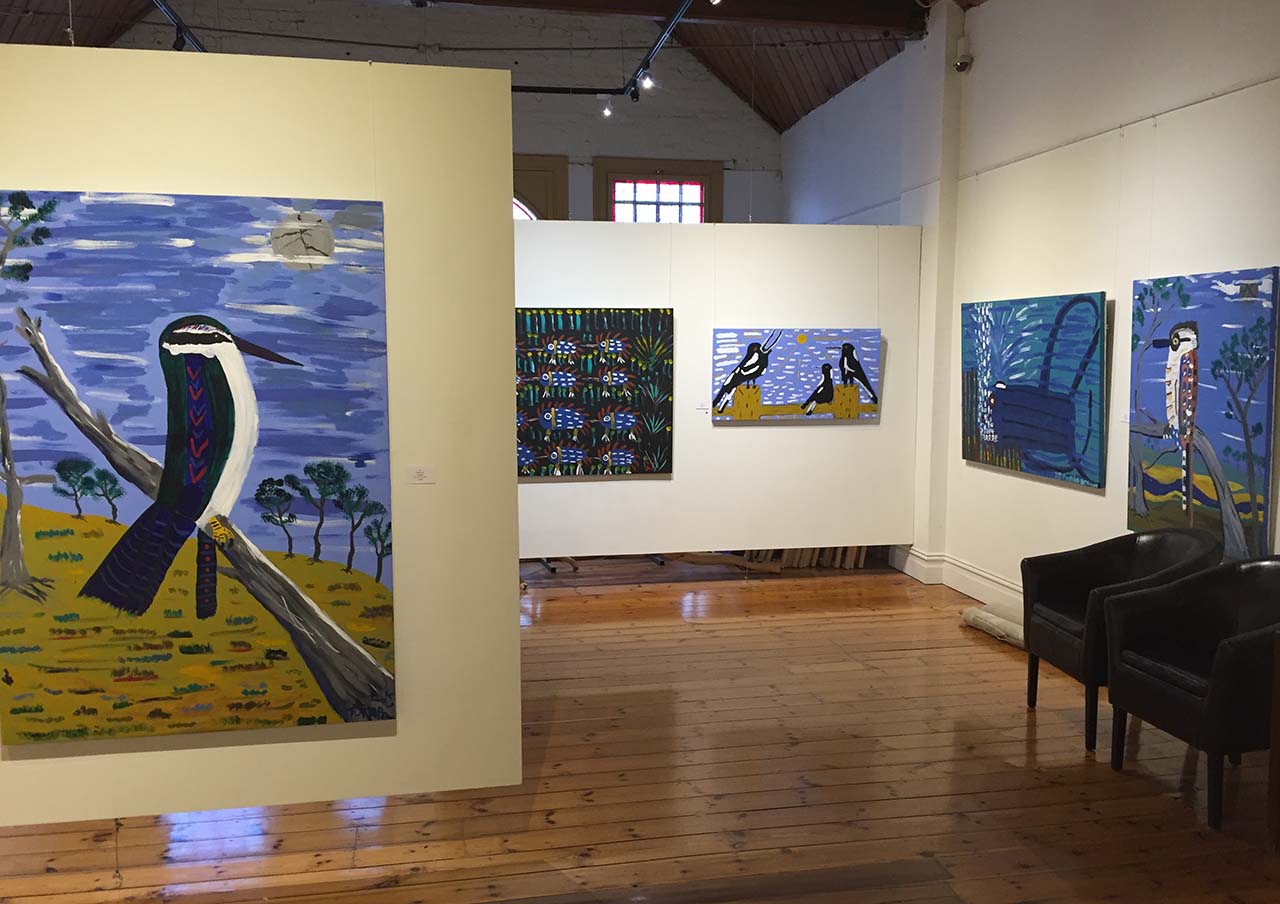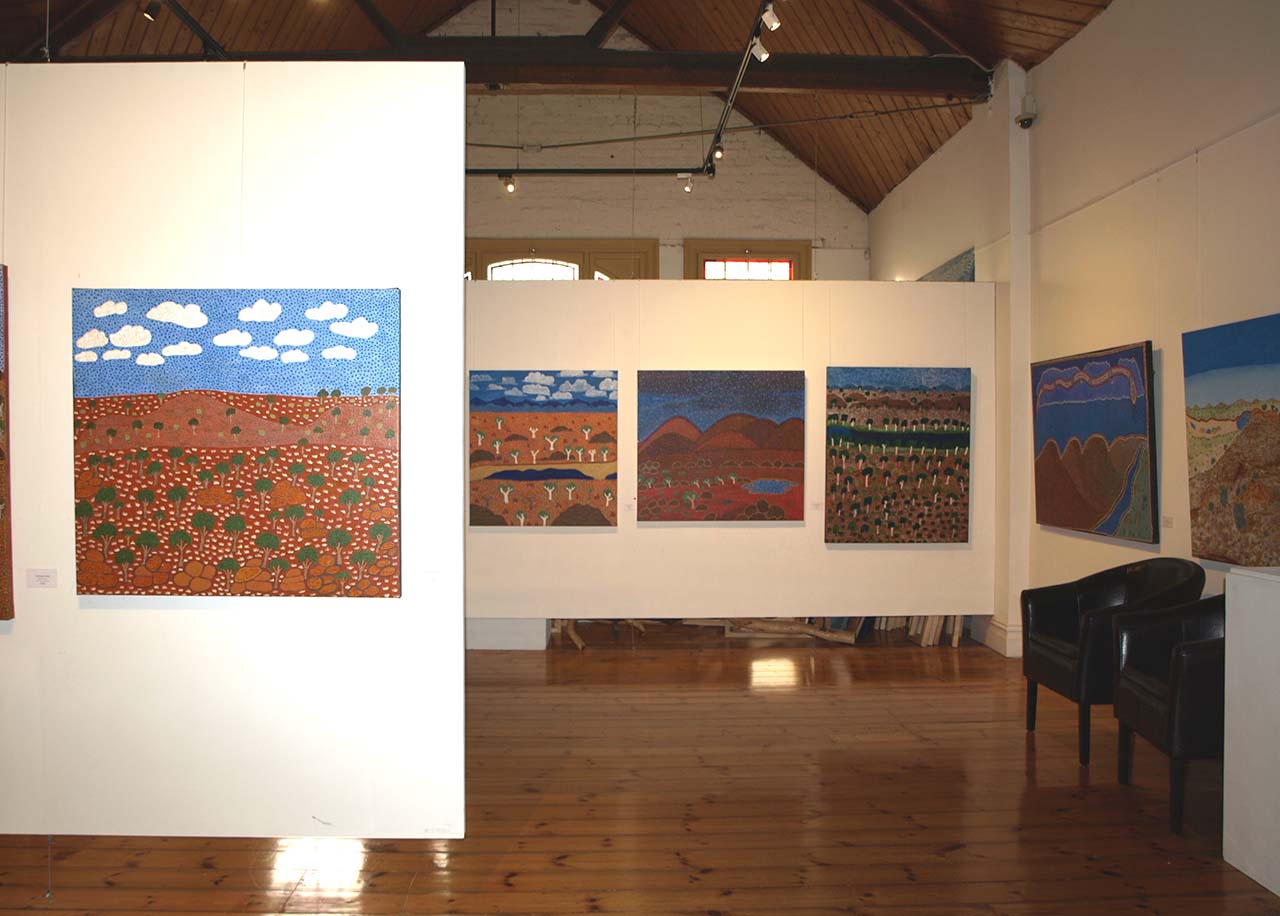How I Curate An Aboriginal Art Exhibition at Japingka
I’ve been curating Aboriginal art at Japingka for thirty-five years, and in that time, I’ve never had to explain to anyone what I’m doing.
A friend dropped by the other day and commented on how very different the room feels with some new paintings up. Our summer exhibition has been hanging for a couple of months now. During that time we’ve sold many of the works and had to replace them with others from our stockroom.
My friend commented that on opening nights, the room feels very still and resolved. She asked me about the process of hanging an exhibition and how long it takes to get to a point when I feel happy with the room's look and feel. She asked me a lot of questions about how I make these decisions.
I’ve never had to explain the process before, and some of it was quite hard to put into words. Here’s a description of how I arrange an exhibition.

The first thing I do is lay the paintings out around the walls, leaning them into their positions. I’ve hung art in this gallery space for so long that I have a sense of what will probably work. However, with everything that’s visual, you can’t be 100% sure until you lock it into place. You think something will work, and then you change your mind.
Normally, I might lay out twenty paintings around the walls of the large Gallery 1 at Japingka. I would probably move things back and forth, maybe for an hour. Sometimes, if an exhibition is difficult, it might take me two hours just to position them.

The thing about paintings is, they react with one another. If you put two things together, the first thing doesn’t look the same once you move the second artwork in place. I’m constantly trying to get a balance that makes all the paintings appear at their best.
It’s a visual thing. I walk around. I constantly adjust. Sometimes I have a wall of very big works together. Sometimes I’ll put together a number of small works. After a while a wall becomes a complete artwork in its own right. I might have six different paintings on it.
There is a visual order in which things seem to fall into place. In other words, sometimes they need more contrast, or sometimes they need a balance of something similar. You’re just really putting things in place, relying on your intuition, or just your aesthetic reactions, and moving them around until you get the show that you want.
It is about composition, but it’s also about making paintings most at ease on the wall with the other paintings that are around them. An exhibition is, to some degree, a compromise, because there’s a lot of artworks in one space in the gallery. In our homes there might only be three or four artworks in a room.
My job is to give the artworks an environment which shows them at their best. It is intuitive and it’s visual. I need to consider the relationship between the two artworks. Do they visually work or do they conflict in some way?
It’s also about continuity. I want the viewer to comfortably move from one painting to the next and have some little aha moments where they say, “Oh, wow.” They’ve gone from this to this and then a surprise.

Sometimes you want stillness, but sometimes you actually need something to get in there and shake things up. For example I’ve got three black and white paintings, and I’ve got one red, black, and white painting. So do I put the three black and white ones together? Do I put the red work at the end or in the middle? Until I see them, I don’t know. Often you need that extra little counterbalance, that maybe has a slightly jarring impact, to make the other paintings look their best.
There is a risk in putting too many similar things together, similar sizes or similar styles. That is not the optimum way to display them. Sometimes you need to break them up. Sometimes you do need the synchronicity of a series of works that have continuity.
That can be the difference in a solo exhibition, where there is more similarity of style, versus either a group exhibition, a community exhibition, where you’ve got a whole group of artists with different looks all needing to go together. There’s probably no one reaction. It’s not quite balance or symmetry, or even stillness, but it can be what sets a wall to really activate, or really jump about, just by putting two or three paintings on it. Which two or three paintings will do that job?
My friend wanted to know if I ask anyone else on staff for a second opinion, or do you just trust your judgment? That’s easy – I just trust my judgement. Usually, if you ask three people, you’ll get three different responses. That’s the nature of the visual world. It’s a bit like if you show three people a painting, someone will like it, someone will think it’s okay, and someone will dislike it. It’s as diverse as that, and so are the ways that you lay out twenty or thirty paintings in one room. For this reason I generally rely on my own judgment.
At Japingka we try to curate two exhibitions at a time. We’ve got Gallery 1 and Gallery 2 upstairs. Gallery 1 is a larger exhibition space so we put our major exhibitions there. We try and curate something that’s complementary, but probably opposite, in the adjacent Gallery 2. We do this so we’re not offering the same thing right through the whole gallery space.

My friend asked me what happens when art work is being arranged on the walls of my own home. It’s funny, I do this for a job but when it comes to arranging pictures at home my wife and children do it. I take a holiday from having to decide and I’m usually happy with what they do.
